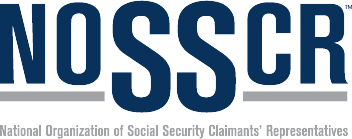The Top 5 Ergonomic Tools Every Office Worker Should Have
In today's fast-paced office environments, the physical well-being of employees often takes a backseat. However, overlooking the importance of ergonomics can lead to a myriad of health issues and increased workers' compensation claims. As we spend countless hours at our desks, it's crucial to ensure our workspace promotes good posture and reduces strain. This article delves into the top five ergonomic tools that every office worker should consider integrating into their daily routine.
The Importance of an Ergonomic Office
Ergonomics, derived from the Greek words "ergon" (work) and "nomos" (laws), refers to the science of designing workspaces, products, and systems to fit the people who use them. In the context of the office environment, ergonomics plays a pivotal role in ensuring that workers remain healthy, productive, and comfortable throughout their workday. Here's why ergonomics is of paramount importance in the office:
Reduction of Work-Related Injuries
Poorly designed workspaces can lead to musculoskeletal disorders (MSDs) such as carpal tunnel syndrome, tendonitis, and chronic back pain. By implementing ergonomic solutions, the risk of these disorders can be significantly reduced, ensuring that employees remain healthy and active.
Enhanced Productivity
An ergonomic workspace allows employees to work more efficiently. When tools are within easy reach, chairs support posture, and computer screens are at the right height, workers can perform tasks more quickly and with less effort.
Increased Comfort
Comfort is directly linked to productivity and job satisfaction. Ergonomic chairs, keyboards, and other tools ensure that employees are comfortable throughout the day, reducing the need for frequent breaks and adjustments.
Cost Savings
Work-related injuries can lead to significant medical expenses and lost workdays. By investing in ergonomics, companies can reduce these costs. Fewer injuries mean fewer workers' compensation claims and less downtime.
Employee Satisfaction and Retention
When employees feel that their well-being is a priority, they are more likely to be satisfied with their jobs and remain loyal to the company. An ergonomic workspace can be a key factor in employee retention.
Promotion of Good Posture
Proper ergonomics encourages workers to maintain good posture, which is essential for overall health. Good posture reduces the strain on the body's musculoskeletal system, preventing long-term health issues.
Reduction of Eye Strain
Ergonomic lighting and monitor placement can significantly reduce eye strain, a common issue in office environments. This not only ensures better eye health but also reduces fatigue and increases concentration.
The importance of ergonomics in the office cannot be overstated. It's not just about providing fancy chairs or adjustable desks; it's about creating an environment where employees can thrive.
Top 5 Ergonomic Tools Every Office Worker Should Have
In the modern office, where many employees spend hours seated and interacting with digital devices, ergonomic tools have become essential for maintaining health and productivity. These tools are designed to minimize strain, reduce the risk of work-related injuries, and promote comfort. Here are the top five ergonomic tools every office worker should consider incorporating into their workspace:
Ergonomic Chair
Features: Look for chairs with lumbar support, adjustable height, armrests, and a tilt mechanism. The chair should also have a breathable fabric and a base with at least five wheels for stability.
Benefits: An ergonomic chair supports the natural curve of the spine, reduces back pain, and promotes good posture. Over time, this can prevent chronic spinal issues and reduce fatigue during long working hours.
Adjustable Standing Desk
Features: A good standing desk offers easy height adjustment, ensuring that users can alternate between sitting and standing. It should be stable and provide ample space for all necessary tools and devices.
Benefits: Standing desks combat the health risks associated with prolonged sitting, such as cardiovascular issues and obesity. They also promote better posture and can increase energy and alertness.
Ergonomic Keyboard and Mouse
Features: These devices should promote natural wrist positioning. Keyboards might have a split design or a negative tilt, while ergonomic mice might be vertical or contoured to fit the hand's shape.
Benefits: Using ergonomic keyboards and mice can significantly reduce the risk of repetitive strain injuries like carpal tunnel syndrome. They also minimize wrist and hand fatigue, making extended computer use more comfortable.
Document Holder
Features: Ideally, a document holder should be adjustable in angle and height. It should be sturdy and positioned at the same level as the computer screen.
Benefits: This tool reduces neck and eye strain by eliminating the need to constantly look down at papers. It promotes better posture and can increase work efficiency by keeping essential documents within easy view.
Footrest
Features: A good footrest offers adjustable height and a non-slip surface. It should be wide enough to comfortably accommodate both feet.
Benefits: Footrests support proper leg positioning, reducing strain on the lower back. They also promote better circulation, especially for those whose feet might not comfortably reach the floor.
Incorporating these ergonomic tools into an office setup is a proactive approach to health and well-being. Not only do they reduce the risk of work-related injuries, but they also enhance comfort and efficiency, making the workday more pleasant and productive. Every office worker should consider these tools as essential components of a modern, health-conscious workspace.
Additional Tips for Creating an Ergonomic Workspace
Creating an ergonomic workspace goes beyond just investing in the right tools. It's about understanding the nuances of one's work environment and making adjustments that cater to individual needs while promoting health and productivity.
When considering ergonomics, it's essential to recognize the dynamic nature of our bodies. We're not designed to remain static for extended periods. Hence, taking regular breaks is crucial. Every hour, make it a point to stand, stretch, or even take a short walk. This not only alleviates physical strain but also refreshes the mind, boosting creativity and focus.
Lighting plays a more significant role in ergonomics than most realize. Proper lighting reduces eye strain and fatigue. Natural light is ideal, but if that's not feasible, ensure that the artificial lighting is neither too harsh nor too dim. The placement of lights is equally important; they should illuminate the workspace without causing screen glare or casting shadows.
The positioning of tools and devices is another aspect that often gets overlooked. Everything you frequently use should be within arm's reach. This minimizes unnecessary stretching or leaning, reducing the risk of strain. For instance, placing the computer monitor at eye level and an arm's length away can prevent neck and eye strain.
Temperature and air quality can also impact comfort and efficiency. A workspace that's too cold or too hot can be distracting and even detrimental to health in the long run. Ensure good ventilation and consider investing in air purifiers if the air quality is subpar.
Lastly, consider the psychological aspects of the workspace. Personalizing your space with plants, art, or photos can make it more inviting and reduce stress. Colors, too, have a psychological impact; for instance, blues and greens are known to have a calming effect.
Conclusion
In the realm of modern workspaces, ergonomics is not merely a trend but a necessity. It's the bridge between functionality and well-being, ensuring that our work environments cater to our physical and psychological needs. By prioritizing ergonomics, we not only enhance our immediate comfort but also safeguard our long-term health, making every workday more productive and enjoyable. Embracing ergonomics is, undeniably, an investment in ourselves and our future.
Cole, Fisher, Cole, O’Keefe + Mahoney is Central California’s leading workers’ compensation and social security disability law firm. With over 30 years of successful experience, we are committed to securing maximum benefits for our clients in the Fresno, California area. Schedule a free consultation today.
© 2025 Cole, Fisher, Cole, O’Keefe + Mahoney
Making a false or fraudulent workers’ compensation claim is a felony subject to up to five years in prison, or a fine of up to $150,000 or double the value of the fraud, whichever is greater, or by both imprisonment and fine.






